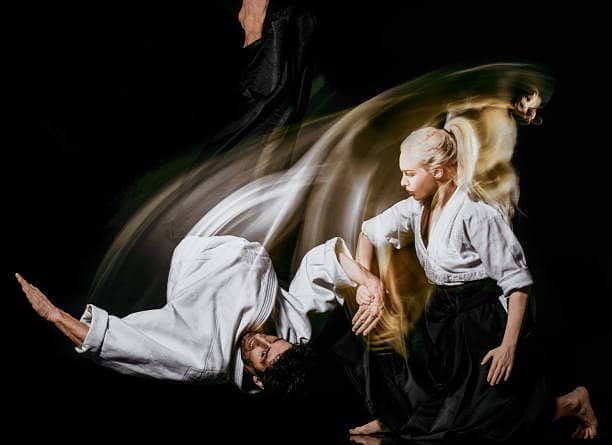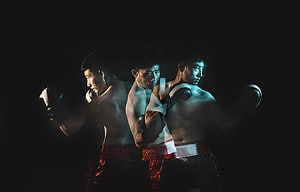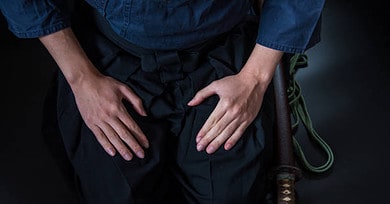“Train your reflexes, sharpen your skills – Master the art of martial arts reaction speed!”
Table of Contents
-
- Introduction
- How to Develop Quick Reaction Speed in Martial Arts Through Drills and Exercises
- The Benefits of Improving Reaction Speed in Martial Arts
- How to Improve Your Reaction Time Through Visualization Techniques
- The Role of Agility and Balance in Developing Reaction Speed in Martial Arts
- How to Incorporate Reaction Speed Training Into Your Martial Arts Training Regimen
“Train your reflexes, sharpen your skills – Master the art of martial arts reaction speed!”
Introduction
Reaction speed is an important skill to have in martial arts. It is the ability to quickly recognize and respond to an opponent’s movements. Having good reaction speed can help you anticipate and counter your opponent’s attacks, allowing you to stay one step ahead. Training your reaction speed can help you become a better martial artist and give you an edge in competition. In this article, we will discuss some tips and exercises to help you improve your reaction speed in martial arts.
How to Develop Quick Reaction Speed in Martial Arts Through Drills and Exercises
Developing quick reaction speed in martial arts is essential for success in the sport. It requires a combination of drills and exercises to hone the reflexes and agility needed to react quickly and effectively to an opponent’s movements. Here are some drills and exercises to help you develop quick reaction speed in martial arts.
Shadowboxing: Shadowboxing is a great way to practice your reflexes and reactions. It involves moving around and throwing punches and kicks in the air, as if you were sparring with an opponent. This helps you to develop the ability to react quickly to an opponent’s movements.
Reaction Drills: Reaction drills involve having a partner throw punches and kicks at you, and you must react quickly to block or dodge them. This helps to develop your reflexes and agility, as well as your ability to anticipate an opponent’s movements.
Speed Drills: Speed drills involve performing a series of punches and kicks as quickly as possible. This helps to develop your speed and agility, as well as your ability to react quickly to an opponent’s movements.
Agility Drills: Agility drills involve performing a series of movements, such as jumping, hopping, and running, as quickly as possible. This helps to develop your agility and coordination, as well as your ability to react quickly to an opponent’s movements.
Footwork Drills: Footwork drills involve performing a series of footwork movements, such as shuffling, stepping, and pivoting, as quickly as possible. This helps to develop your footwork and coordination, as well as your ability to react quickly to an opponent’s movements.
By regularly practicing these drills and exercises, you can develop the quick reaction speed needed to succeed in martial arts.
The Benefits of Improving Reaction Speed in Martial Arts
Reaction speed is an important skill to have in martial arts, as it can be the difference between success and failure in a fight. Improving reaction speed can help martial artists become more effective in their techniques and better able to defend themselves. Here are some of the benefits of improving reaction speed in martial arts.
First, improved reaction speed can help martial artists react more quickly to their opponents’ movements. This can give them an advantage in a fight, as they will be able to anticipate their opponents’ moves and counter them more effectively. Improved reaction speed can also help martial artists react more quickly to changes in their opponents’ stances or techniques, allowing them to adjust their own techniques accordingly.
Second, improved reaction speed can help martial artists develop better timing and coordination. This can help them execute their techniques more effectively, as they will be able to better anticipate their opponents’ movements and react accordingly. Improved timing and coordination can also help martial artists better control their own movements, allowing them to move more efficiently and effectively.
Third, improved reaction speed can help martial artists develop better reflexes. This can help them better defend themselves in a fight, as they will be able to react more quickly to their opponents’ attacks and counter them more effectively. Improved reflexes can also help martial artists better control their own movements, allowing them to move more quickly and accurately.
Finally, improved reaction speed can help martial artists develop better focus and concentration. This can help them better anticipate their opponents’ movements and react accordingly, as well as better control their own movements. Improved focus and concentration can also help martial artists better control their emotions in a fight, allowing them to remain calm and composed.
In conclusion, improving reaction speed in martial arts can have many benefits. It can help martial artists react more quickly to their opponents’ movements, develop better timing and coordination, develop better reflexes, and develop better focus and concentration. All of these benefits can help martial artists become more effective in their techniques and better able to defend themselves.
How to Improve Your Reaction Time Through Visualization Techniques
Visualization techniques are a powerful tool for improving reaction time. By using visualization techniques, you can train your mind to respond more quickly to stimuli. This can be beneficial in a variety of situations, such as sports, driving, and even everyday tasks. Here are some tips for improving your reaction time through visualization techniques.
First, it is important to understand the concept of visualization. Visualization is the process of creating a mental image of a desired outcome. It involves focusing on the desired outcome and imagining it in detail. This can help to create a mental blueprint that can be used to guide your actions.
Once you understand the concept of visualization, you can begin to practice it. Start by finding a quiet place where you can focus on your visualization. Close your eyes and imagine yourself in the situation where you need to react quickly. Visualize yourself responding quickly and accurately to the stimuli.
Next, practice visualizing the situation multiple times. Each time, focus on the details of the situation and imagine yourself responding quickly and accurately. This will help to create a mental blueprint that you can use to guide your actions.
Finally, practice the visualization technique in real-life situations. When you are in a situation where you need to react quickly, take a few moments to visualize the situation and imagine yourself responding quickly and accurately. This will help to train your mind to respond more quickly in the future.
By using visualization techniques, you can improve your reaction time and become more successful in a variety of situations. With practice and dedication, you can use visualization techniques to become more responsive and successful.
The Role of Agility and Balance in Developing Reaction Speed in Martial Arts
Reaction speed is an essential skill for martial artists, as it allows them to respond quickly and effectively to their opponents’ movements. Agility and balance are two key components of developing reaction speed in martial arts.
Agility is the ability to move quickly and easily in any direction. It is important for martial artists to be able to move quickly and accurately in order to respond to their opponents’ movements. Agility can be developed through drills and exercises that focus on quick changes of direction, such as sprints, lateral shuffles, and agility ladders.
Balance is the ability to maintain control of one’s body while in motion. It is important for martial artists to be able to maintain their balance while moving in order to respond quickly and accurately to their opponents’ movements. Balance can be developed through drills and exercises that focus on maintaining control of one’s body while in motion, such as single-leg balance drills, balance boards, and stability balls.
By developing agility and balance, martial artists can improve their reaction speed. This will allow them to respond quickly and accurately to their opponents’ movements, giving them an advantage in competition. With regular practice and dedication, martial artists can develop the agility and balance necessary to become faster and more effective in their martial arts practice.
How to Incorporate Reaction Speed Training Into Your Martial Arts Training Regimen
Reaction speed training is an important part of any martial arts training regimen. It helps to improve reaction time, which is essential for success in martial arts. Reaction speed training can be incorporated into your martial arts training in a variety of ways.
First, you can practice drills that focus on reaction speed. These drills can involve striking a target or defending against an attack. You can also practice drills that involve reacting to visual cues, such as a light or sound. These drills can help to improve your reaction time and help you to react more quickly in a fight.
Second, you can practice sparring with a partner. Sparring is a great way to practice reacting to an opponent’s movements. You can practice reacting to punches, kicks, and other attacks. This will help you to develop the ability to react quickly and effectively in a fight.
Third, you can practice shadowboxing. Shadowboxing is a great way to practice reacting to an imaginary opponent. You can practice reacting to punches, kicks, and other attacks. This will help you to develop the ability to react quickly and effectively in a fight.
Finally, you can practice visualization exercises. Visualization exercises involve imagining yourself in a fight and reacting to an opponent’s movements. This will help you to develop the ability to react quickly and effectively in a fight.
By incorporating reaction speed training into your martial arts training regimen, you can improve your reaction time and become a better martial artist.




